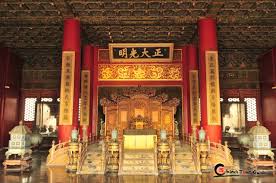The Ming Dynasty was
a time of restoration and expansion. It consisted of large scale landscapes,
flower-and-bird compositions, and figural narratives used to glorify the new
dynasty. The art in this dynasty used the traditions of the Southern Song, an
ink-wash style. Artists painted as a way to show their loyalty to the emperor and express their feelings. Other great contributions to art were calligraphy, ceramics,
gardening and architecture, and painting.
Ceramics
 |
| The preparation of cobalt is used for underglaze blue decoration on the ceramics. |
 |
Tileworks Model of Sancai Pagoda
The Ming dynasty involved an increase of innovation in ceramic manufacture. New techniques for color and painting were developed. This period exported porcelain around the world, beginning with the Wanli Emperor (1572-1620). Sophisticated porcelain was made for the imperial court. Many ceramic workshops were owned by the Emperor and a large amount were sent out as diplomatic gifts or for trade.
|
Gardens and Architecture
 |
Forbidden City (Beijing, 1406)
 |
The Inner Court of the Forbidden City
One of the greatest achievements of the Ming's architecture is the Forbidden City. It was the palace of Ming dynasty emperors. Nobody was allowed in or not without permission from the emperor. The Inner court is where the emperor lived.
The Ming Dynasty was well known for extravagant gardens. Gardens were mostly found among the rich, found in important places such as The Forbidden City. Gardens played a key role in the culture of Chinese society and are still present today.
|
Work Cited
"Ming." MIA Minneapolis Institute of Arts. Web. <http://archive.artsmia.org/art-of-asia/history/dynasty-ming.cfm>. |






No comments:
Post a Comment